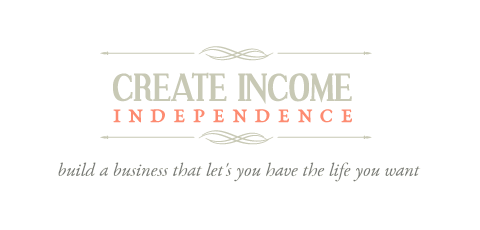
(In my mission to help the aspiring entrepreneur create, build and grow a successful business, we wrote the following series: Passion- Is it the Only Way to Find a Business Idea, Researching Your Audience’s Needs Is the Key to Create a Successful Offer, How to Use a Landing Page to Validate Your Idea, and How to Create a Powerful Facebook Ad, A Simple Way to Validate a Business Idea, and, How to Test Your Offer With Facebook.)
Today, we will look at how to run your business.
There are two different ways entrepreneurs think and approach their business and it makes a difference to your long-term success and the income you generate.
I’m referring to them as a tactical entrepreneur and a strategic entrepreneur.
Tactical Entrepreneur
The goal of a tactical entrepreneur is to maximize cash flow and get immediate rewards. He takes advantage of every opportunity that he finds that will increase his profits.
The goal of a tactical entrepreneur is to maximize cash flow on a short-term basis and get immediate rewards. He takes advantage of every opportunity that he finds that will increase his profits.
That goal results in a business that looks for the easiest way to show its offers to as many prospects as quickly as possible. They will typically use whatever the hot tool is at the moment. Aggressive ads, social media engagement, contests, pop-up boxes, free giveaways, and anything else needed to get the sale.
However, tactics only work for so long before you have to find new ones. Unless you create a plan to keep in touch with these customers and to build a brand, you can not count on repeat business. This would be like having a retail store where you are advertising huge sales, but you don’t care about creating an atmosphere where people like to shop, feel their needs are being met, and like to return frequently.
This type of entrepreneur is characterized by working hard to be profitable by always searching for the newest tool or trick. Moving from one approach to another but with no plan or vision.
Strategic Entrepreneur
“Strategy without tactics is the slowest route to victory. Tactics without strategy is the noise before defeat.”. The Art of War, Sun Tzu.
A strategy is a plan as to how you are going to accomplish a goal. A strategic entrepreneur has a defined goal and a clear vision of what they want for their business.
Normally, their goals are to create a long-term relationship with their customers so they continue to buy new products and remain happy loyal customers, develop a consistent source of income, a recognizable brand, and long-term wealth.
They look at the marketplace, their strengths, and different strategies that can achieve their goal. They analyze the strategies looking at the pros and cons of each. And pick the one that they feel can best work.
Develop your strategy
To develop a strategy you first have to know who your ideal customer is, what they want, what they need to get them the results they want, how you fit in, how you’re different from everyone else, your businesses strengths, and how you will provide the product to your customer.
You want to look at different strategies to achieve your goals. You want to pick the one that is most likely to work while using the least amount of resources to get the most results.
As part of this strategy, you must include a friendly place (usually your website) where you are viewed as an authority and a valuable resource for the information they need and where you sell them on you, your business, and how you can help them.
This is your opportunity to create demand by showing them you understand their objectives and align with them. This is the foundation to scale your business.
How will you monetize your business?
How you make money is a big part of being strategic. How much you want to make is part of your vision. Since this number is probably significant you need to design this with intention.
We just advised against using short-term tactics that look like they will make you money but quickly fade.
So what do you do instead?
You are playing the long game and you want customers that will stick around, that will look forward to hearing from you, and want the new products you develop. Your plan has to support that.
There are several ways to monetize a business for long-term income. They are courses and products, paid newsletters, coaching, memberships, and subscriptions.
Each one of these has a different way they generate income.
Courses and products are often a one-time purchase. In many cases, this can become a flagship product that you become known for and leads to a demand for similar products. The advantage here is that you get the full purchase price immediately. However, after the initial purchase, there is no continuing income except for what new things you create.
Paid newsletters, coaching, memberships, and subscriptions have recurring income as their model The advantage here is that even though you get just a portion of the income each month, you are always in front of your customers, showing your value and have an easy way to add new products. new products.
For further discussion about memberships versus course read, Membership vs. One-Off Courses – Which is the Better Business Model?
All businesses are systems
A strategic entrepreneur systematizes their business.
When you create and document a system, your business will operate with direction and purpose. Every piece of your operation will be known.
For instance, if one of your products is a paid newsletter, you could define the process as follows. You can put this into a process map with names and duties defined. Who picks the topic, who researches the information, how much information is included, who writes it, who picks the images, what format is it in, who puts it together, who edits it, and when is it scheduled to send out?
This will provide a repeatable process that will be more efficient. It allows you to train other people, outsource the whole or parts of the process, and improve your own workflow.
This leads us to the next strategy of a successful entrepreneur, outsourcing.
Outsourcing
A strategic entrepreneur will delegate non-productive work. This can be done by employees if you have them. However, we are assuming a small but profitable internet business, so the job could go to a VA, contracted worker, freelancer, etc.
This is part of creating a strategy because it frees up your time to do the important productive work that makes money and improves your marketing.
You want to establish a relationship with people who are reliable and have the skills you don’t have.
Conclusion
We’ve looked at two different business approaches. The tactical one where finding opportunities and doing whatever it takes to be profitable is the business motto. Or the strategic one that starts with a goal, a vision, a plan and executes on it to have a true business.
Big businesses become big because they are built on a strategy, with systems, and processes. Small businesses should do the same thing if they want to be profitable and grow. The strategic way leads to better results, more wealth, and less struggle.
The Solo Entrepreneur’s Guide
To make sure you get access to the next post, subscribe to The Solo Entrepreneur’s Guide.
The valuable content in this monthly publication will help you transition from the job world and create a self-reliant income, live life your way, and achieve wealth, freedom, and independence.


Leave a Reply